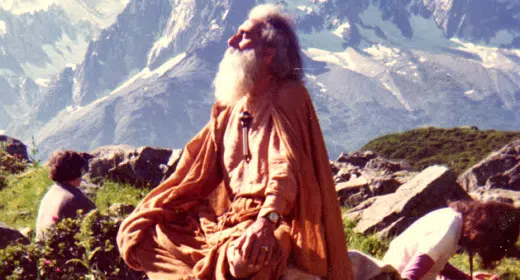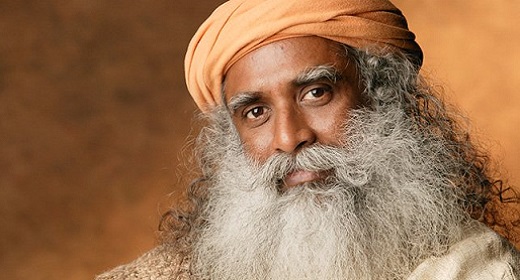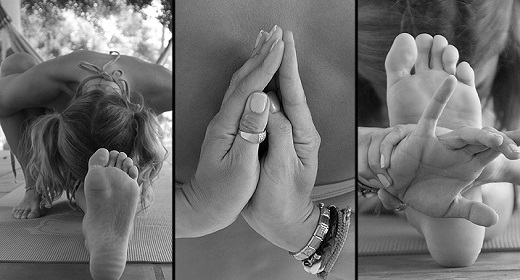by Donna Quesada: Zen and Kundalini Yoga: A Contradiction?

I shared some of my favorite Kundalini mantra music with a Buddhist friend the other day. He loved it, but then gingerly asked whether I “consider it to be compatible with Buddhism”. He asked about the music, but he was really asking about the paths, in general. “Maybe I should just forget about all that and just enjoy it for what it is”, he then mused. And did I have any thoughts?
Of course, I did. And he already knew the answer—”you said it”, I told him. “You should absolutely enjoy it because only the dualistic mind sees a difference. All paths are one and truth is truth”.
I have another Buddhist friend, a musician, who grew up with gospel. To my best knowledge, he would never consider shunning this inspirational music that he loves so much just because it’s Christian. What an idea! So, why wouldn’t it be fine to listen to Kundalini mantra music as a Buddhist?
One thing is certain; gospel is Americana. It’s part of our cultural heritage and we look upon it with nostalgia. On a wider note, Buddhists, like any one else, listen to a variety of music, much of which has no spiritual association at all. So, I would propose that if music with no spiritual connotation is fine, then music with some spiritual connotation would be even better—even when that tradition differs from one’s own because uplifting vibes are, well… nice.
The question of compatibility between two spiritual traditions smacks of the guilt many people still carry around from their childhoods, when their intimidating family religions forbade even a cursory glance at some other religion’s holy book.
But, both Buddhism and the Yogas are inclusive, rather than exclusive, which means one may practice alongside any other religious practice without conflict. And many do. Consider the many Buddhist meditation teachers who still consider themselves Jews (there is even a name for them: Jubus): Joseph Goldstein, Jack Kornfield and Sharon Salzberg are but a few. And everyone knows about Leonard Cohen, Steven Seagal, Robert Downy Jr., Richard Gere and Goldie Hawn. And with regard to Yoga, a better question would be: Who hasn’t tried at least some form of it?
Buddhism, and Zen in particular, is not predicated on any beliefs and if there’s no belief, there’s nothing to contradict. Thus, Zen compliments any practice, spiritual or otherwise, like basketball—which is why Phil Jackson used Zen-style meditation as part of his training methods with the Lakers. Zen is, in the most basic sense, just meditation. It is the practice of waking up to the present moment; it is to “eat when we’re hungry and sleep when we’re tired.” So, it’s not surprising that training in such a discipline would improve performance in everything.
Perhaps my friend’s concern had more to do with the power of Kundalini mantra music. Known as Naad Yoga, it is spiritually potent. It is held that the human body is designed for transformation through its proper practice, but even if you don’t happen to believe that, it certainly won’t hurt you if you go ahead and chant anyway! (And less so, if you’re just listening.)
It is understood in all forms of Yoga that we have a central energy channel, known as the sushmuna, by which prana flows. This energy is our life force, it is consciousness itself, and to awaken its flow is to awaken to our own infinite potential as humans. In Kundalini parlance, it is to awaken to the divine within.
At the heart of this practice is mantra meditation in which we vibrate that central channel as well as every cell in our body, as long as we are chanting from the heart and with the belly. It is understood that everything is vibration, even our state of mind. So, we can either choose sounds that elevate, or not. Naad Yoga is the technology of doing just that.
And so, if it’s potent— all the better!
Even though Zen is not oriented around vibrational technology, it does have another point in common with Kundalini Yoga Practice: mindful meditation. One of my teachers, Guru Singh, talks endlessly about the importance of staying in the what is, rather than in the what should be, which is his way of reminding us to keep our heads out of the “picking and choosing mind.”
Sounds a lot like Zen talk to me!
Our outlook toward spiritual practice doesn’t have to be polemic. It’s not Zen versus Kundalini Yoga, any more than it’s Zen versus Judaism; they’re only separate in the divisive mind! One of the things I always liked about the Zendo was that there were Christians practicing next to Jews—at this level, none of that matters anymore.
While one path is not necessarily better than another, one may be more appropriate for an individual at a certain time than another—that’s the idea behind the various Yogas, or spiritual paths, in India. The great sages recognized that no one path is one size fits all.
We each have different temperaments and innumerable karmic circumstances that make up our lives. And it’s all in flux. Funny enough, if we weren’t allowed to grow and evolve, there would be no Buddhism at all! Buddha himself, born a Hindu, wouldn’t be pigeonholed. He embraced his truth and left the rest behind, settling himself somewhere in the middle of it all.
If acclamation and adaptation are necessary for a religion’s survival as a whole, how much more so is it for an individual in their own evolving, personal practice? Sometimes that means strands of different traditions get intermingled, the way Taoism and Buddhism did in the hearts of the mystics in old China, creating the birth of Ch’an (Zen).
In this light, the whole idea of a forever home is questionable. But even so, only the seeker gets to choose. And, with the right to proceed along the sequence, that is right for him or her. The well-known American spiritual teachers, Ram Dass and Bhagavan Das, both traveled along paths that were ever-expanding, each having received initiation from Buddhist and Yogic teachers—and the former started off Jewish. In Zen, as well, it’s not uncommon to venture into different forms of meditation, as found in the various schools of Zen, as well as in other Buddhist traditions, such as vipassana.
As a fun and hopefully useful analogy, look at Zen as a wonderful broth—the foundation of every soup that ever was. Like broth, Zen is simple (which doesn’t mean easy) and unembellished. But, when you add potatoes, celery, spices and salt, you’ve got something different. Some will dig it, some won’t.
To play with analogies further, Zen may be seen like an essential strand in the fabric of a rich spiritual life, as a concomitant part of a whole. And further still, think of it as a no-frills wooden boat, which, like any other boat, will carry you just fine to the other shore. Some boats are fancy, some are not, some go fast, some don’t and some rock more than others. How wonderful the differences are!
Through these analogies and commentary on my friend’s innocent question, I hope to have shown the beauty of each tradition, but most of all, that there’s no conflict between them—or with any other path.








































